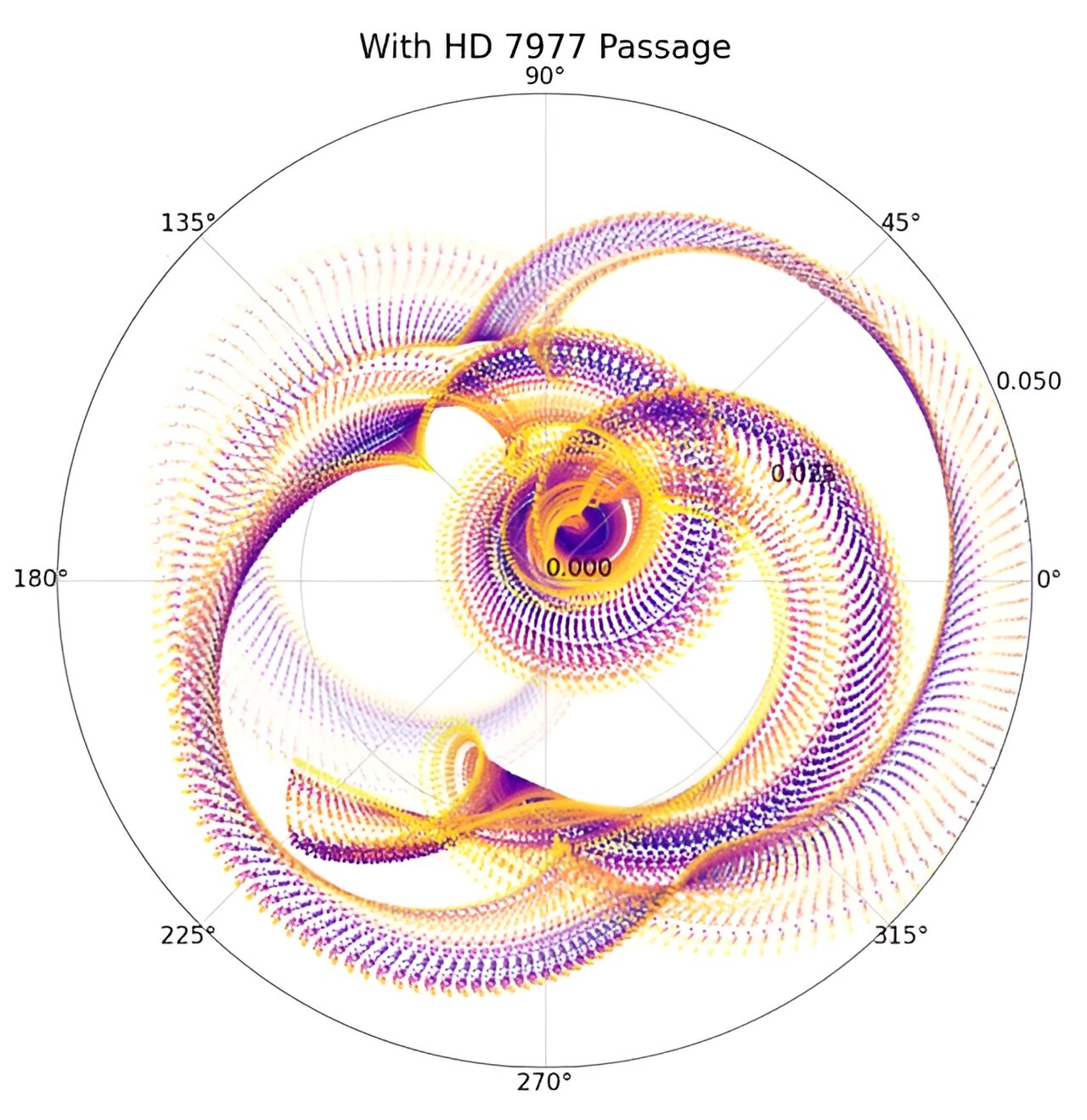Contrary to past assumptions, passing stars can cause changes in the orbits of planets, including the Earth, that are large enough to affect the climate, research suggests. By not taking this into account we’ve overestimated our capacity to calculate past orbital variations, and therefore our capacity to attribute past climate changes to variations in Earth’s orbit at the time.
Compared to many asteroids or comets, the Earth’s orbit is a monument to consistency – life might not have survived if it wasn’t. Nevertheless, subtle changes still occur as a result of factors like the gravitational influence of other planets. Some of these, known as Milankovitch cycles, are known to have driven recent cycles of ice ages and interglacial eras. These influences don’t shift the Earth’s average distance from the Sun, but they can trigger switches between rounder and more elongated orbits, which can have a surprisingly large effect on the planet’s climate.
We understand the relationship between the Earth and the other planets well enough that it has been thought we can calculate orbital variation over the last 50-100 million years. Along with movements of the continents, this has been used to explain what the geologic record shows as hotter and colder periods, but we may be overlooking something.
Every massive object in the universe exerts a gravitational influence over every other object, but this is usually far too small to matter. We have calculated the effects of close stars like Alpha Centauri, and giant ones like Eta Carinae, and found their effects microscopic – outweighed even by dwarf planets in the outer Solar System. Consequently, stars beyond the Sun have been left out of efforts to wind the clock backward and reveal Earth’s historic orbit.
Yet the stars, whatever the ancients might have told you, are not fixed. In a few thousand years Alpha Centauri will be more than a light-year closer than it is today. That still won’t be enough for its gravity to affect us, but what if it came closer still, like really close?
We know such things happen. The star HD 7977 is on a path through the Milky Way very different from the stately orbit of our own Sun. It’s been calculated that 2.8 million years ago it came an estimated 13,000 astronomical units from the Sun (about 0.2 light years) – there is a 5 percent chance it was less than 4,000 AU.
The Planetary Science Institute’s Dr Nathan Kaib and Dr Sean Raymond of Université de Bordeaux tested whether HD 7977’s gravitational tug would have been enough that its influence should be factored into calculations for the time. They found a 13,000 AU passage would have no noticeable effects, but that’s not true for one more than three times closer (and therefore with gravitational effects more than 10 times greater).

How the close passage of HD 7977 increases uncertainty about the Earth’s orbit over the last 56 million years. The chart represents the eccentricity of the Earth’s orbit, and direction of perihelion. Results vary depending on estimates of HD 7977’s distance.
Image Credit: N Kaib/PSI
Perhaps surprisingly, HD 7977 did not make much direct difference to Earth. However, being further from the Sun, the gas giants are more susceptible, and they in turn influence Earth. Indeed, if HD 7977 did make such a close passage, Jupiter and Saturn settled into their new orbits, and would have continued affecting Earth in ways dictated by the passage long after the star left.
Even though the effect is indirect, HD 7977’s flyby means we can only wind back the clock on Earth’s orbit accurately by about 50 million years, Kaib and Raymond conclude, instead of 60 million or so as previously thought.
“The geologic record shows that changes in the Earth’s orbital eccentricity accompany fluctuations in the Earth’s climate. If we want to best search for the causes of ancient climate anomalies, it is important to have an idea of what Earth’s orbit looked like during those episodes,” Kaib said in a statement.
“One example of such an episode is the Paleocene-Eocene Thermal Maximum 56 million years ago, where the Earth’s temperature rose 5-8 degrees centigrade [9-14°F]. It has already been proposed that Earth’s orbital eccentricity was notably high during this event, but our results show that passing stars make detailed predictions of Earth’s past orbital evolution at this time highly uncertain, and a broader spectrum of orbital behavior is possible than previously thought.”
It’s entirely possible earlier passages from other stars were even closer, and more disruptive.
The study is open access in the Astrophysical Journal Letters.
Source Link: Passing Stars Have Changed Earth’s Orbit – But We Don’t Know How